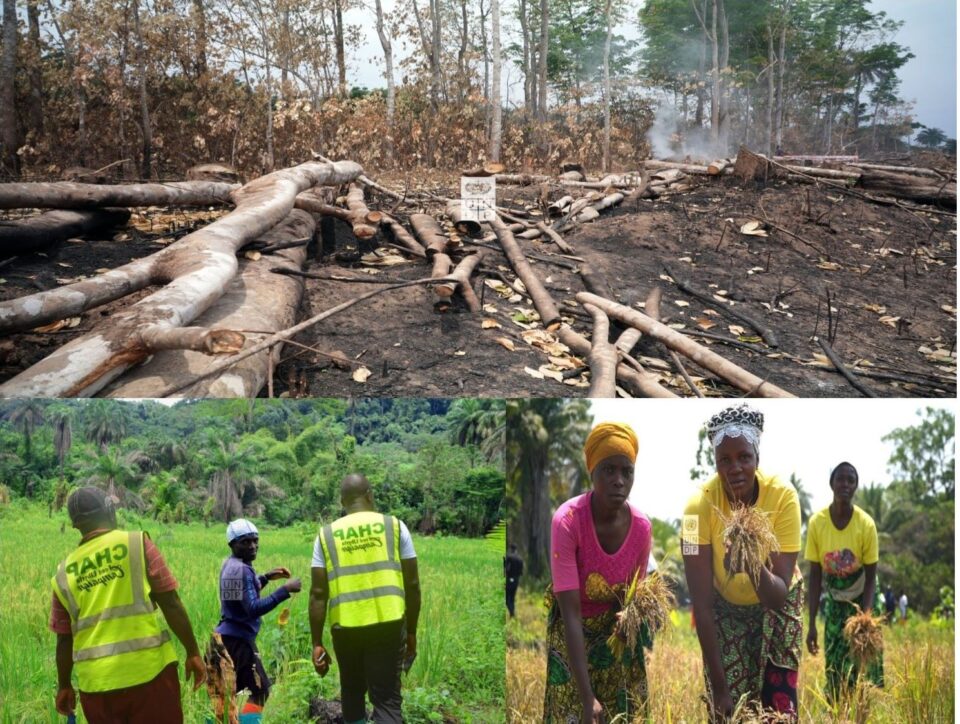International Day of Biodiversity, May 22, 2025
By Abraham Tumbey, UNDP Liberia Programme Coordinator (Inclusive Green Growth Pillar)
Monrovia, Liberia; May 21, 2025: Liberia, endowed with rich natural resources, is on a path to sustainable development. The National Development Plan, the ARREST Agenda for Inclusive Development (2024-2029), emphasizes environmental sustainability as a key pillar, promoting responsible natural resource management, biodiversity protection, and resilience to climate change.
Liberia boasts over 2,900 species of vascular plants, approximately 225 timber species, and around 100 species unique to Liberia. The country is also home to around 150 species of mammals, over 600 bird species, approximately 75 species of reptiles, and over 1,000 described insect species. The IUCN lists 2,438 animal species on the Red List, with 29 endemic to Liberia.
Protecting Liberia’s biodiversity is a mammoth task requiring significant financial commitment. As a party to the Convention on Biological Diversity (CBD), Liberia has committed to the 30×30 initiative, which aims to protect 30% of the world’s land and sea areas by 2030.
This initiative is a key component of global conservation efforts and addresses the interconnected challenges of climate change and biodiversity loss.
Liberia’s forests and biodiversity are critical assets that can be leveraged to mobilize development financing. The National Biodiversity Strategy and Action Plan (NBSAP) for 2017-2025 underscores the importance of intrinsic and extrinsic values of biological resources.
It serves as a national blueprint for managing biodiversity and highlights the need for a cost-benefit analysis based on long-term gains for the country.
Effective biodiversity conservation requires strong partnerships and collaboration between the Ministry of Finance and Development Planning, the Forestry Development Authority, the Liberia Land Authority, the Environmental Protection Agency, research and academic institutions, civil society, communities, and other stakeholders.
These duty bearers must work together to create a budget line for implementing biodiversity projects and engage with development partners to close the biodiversity financing gap.
UNDP’s Initiatives
On May 1, 2025, the United Nations Development Programme (UNDP) launched the Biofin project in Liberia. This project aims to mobilize biodiversity financing and is a significant milestone for the country. Over the past years, the government of Liberia has worked with the World Bank, UNDP, other UN agencies, the European Union, the Swedish Embassy, and other international donors to develop and implement the NBSAP. UNDP has been a steadfast partner to the government of Liberia in the areas of forest and biodiversity conservation.
Notable projects include the Community-Based Forest Management (CBFM) and the Leh Go Green (Let’s Go Green) projects, funded by the Embassy of Sweden and the European Union Delegation, respectively. These initiatives are crucial in promoting sustainable forest management, enhancing community livelihoods, and conserving biodiversity.
Creating economic incentives to promote income and livelihood for forest-dependent communities is essential for securing their commitment to lead community-based biodiversity conservation. By providing alternative sources of income and improving living standards, communities like Fornor, Lukasu, Tiehnpo, and Barwu can become active stewards of their natural environment, ensuring the long-term sustainability of conservation efforts.
Call to Action
In line with the UNDP’s concept of “Leave No One Behind” (LNOB), it is crucial to integrate gender-responsive biodiversity conservation and finance solutions. Enhancing the economic empowerment of women, persons with disabilities, and other vulnerable populations through targeted initiatives can significantly contribute to biodiversity conservation. By ensuring that these groups have access to resources and opportunities, Liberia can foster inclusive and sustainable development.
The preservation of Liberia’s biodiversity is a national concern and a global imperative. We call upon development partners to support biodiversity financing in Liberia for the benefit of the global community.
UNDP stands ready to continue supporting the government and collaborating with partners to promote biodiversity and conservation in Liberia. Together, we can ensure a thriving future for Liberia’s rich natural heritage.
Liberia must prioritize strengthening policies and governance related to biodiversity financing. Civil society organizations should advocate for biodiversity financing budgets, and the Environmental Protection Agency must continue to develop and implement environmental policies and programs.
Establishing a Conservation Trust Fund and partnering with initiatives like the UN’s REDD+ can help offset the impacts of activities like mining and close the $460 million biodiversity funding gap.
As we observe this year’s International Day of Biodiversity under the theme “Harmony with nature and sustainable development”, it is important to note that preserving Liberia’s biodiversity is not just an environmental issue but one vital for the country’s health and survival.
By leveraging its natural resources and fostering strong partnerships, Liberia can mobilize the necessary financing to support its long-term development goals and ensure a thriving future for its unique biodiversity.
Collaborative efforts and support for the Biofin project in Liberia are essential to ensure a thriving future for Liberia’s biodiversity. Together, we can build a sustainable and prosperous future for all.

